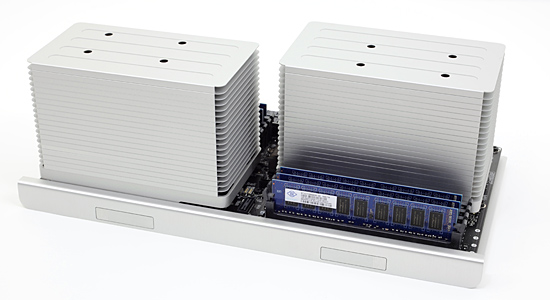

- #Most affordable video card upgrade for mac pro dual core intel xeon processor speed: 2.66 ghz install
- #Most affordable video card upgrade for mac pro dual core intel xeon processor speed: 2.66 ghz update
- #Most affordable video card upgrade for mac pro dual core intel xeon processor speed: 2.66 ghz full
- #Most affordable video card upgrade for mac pro dual core intel xeon processor speed: 2.66 ghz software
On the CPU front, the firmware update now supports the considerably faster Westmere Intel Xeon chips.
#Most affordable video card upgrade for mac pro dual core intel xeon processor speed: 2.66 ghz install
Memory wise, I could now install faster 1333 DDR3 memory.

The firmware upgrade that I performed taking the system from 4,1 to 5,1 made this CPU and memory upgrade an even better proposition. However, seeing how promising the dual GPU upgrade went, I started researching the possibility of purchasing an upgraded CPU and memory. Up until I actually tried using the machine, I never even really considered upgrading the CPU or memory. So far I have not spent any extra cash on updating the 2009 Mac Pro. If you're hard pressed and can't afford the newest system, you can STILL get by on this machine from 2009. Especially considering the age of the system it was running on. So far, it seems like it can.Īnother issue, while gaming specifically, is that due to the relatively weak single thread capabilities of the CPUs, is that although average frame rates were decent, the fluctuation of the highest frame rates to the lowest frame rates in a single game could vary wildly causing jarring stuttering at times but not enough for me to state that the game was unplayable. I'm seeing if along it's lifespan, various upgrades and updates can keep it within an acceptable performance level. Remember, I'm not looking to see if the 2009 Mac Pro can best a modern equivalent. Benching between various tests the difference was only a few percentage points lower when using reduced power but the benefits of having both GPUs was still apparent. In fact, in order for me to have stability, I had to reduce the power draw on the GPUs so that it didn't shut off my Mac Pro since the power draw was too high. Firstly, the Nehalem CPUs aren't nearly fast enough to properly feed one let alone two of the RX 580 GPUs. Although I was able to install two modern GPUs in this machine, there are a couple of allowances I had to accept. Yes crossfire worked (mostly, but I'm not certain if the issues I had were due to the Mac Pro or due to crossfire itself).ĭon't get me wrong.
#Most affordable video card upgrade for mac pro dual core intel xeon processor speed: 2.66 ghz software
In fact, as I mentioned previously, since I was able to install the latest AMD "Adrenaline" drivers, I knew I had the latest and greatest software those GPUs could offer. I went from 1 GB of onboard VRAM to 2x8 GB. Truly a testament to the engineering that went into designing the 2009 Mac Pro. At this point I was amazed with how I could reasonably upgrade hardware components such as a modern GPU (let alone two of them!) in such an aging system. Since I was able to already install macOS High Sierra, the upgrade was literally plug and play (with some caveats I'll detail in another article). I put both of my AMD RX 580 GPUs into the Mac Pro to hopefully get higher fidelity for gaming and hardware encoding. Was the 2009 Mac Pro capable of housing my pretty decent and modern GPUs? I decided to find out. The 2009 Mac Pro has two PCIe x 16 slots.
#Most affordable video card upgrade for mac pro dual core intel xeon processor speed: 2.66 ghz full
The reason I suspect was due to the fact the the bus speed of the Thunderbolt 3 connection to the eGPU enclose is only 1/4 of a full PCIe x16 bus. Recently, I noticed that although the eGPUs allowed for my MacBook Pro to have access to a full-fledged GPU, the performance was nowhere near that of a GPU that is housed on a regular PCIe slot. Luckily for me, I have two eGPU enclosures both housing AMD RX 580 GPUs. Frankly, these are fine for my purpose but note that the standard SATA connections on the motherboard of the Mac Pro would make getting a larger SSD an easy upgrade. Spinning disks on the tired, slow old SATA II or Firewire interfaces on the old Mac Pro are especially slow, but timeline cache helps a lot.The system came with a 160 GB SSD drive and a SATA 640 GB HDD. If they are not showing fairly significant utilization that makes me more suspicious that it is plugin or disk or other Pro Tools bugginess issues. Is the system *fully* optimized? What do the CPU meters show when using Pro Tools like when you get CPU errors. Are you running timeline cache? How large a cache? What does a typical session look like? (Sample rate, #tracks, plugins etc). What make/model/spec drives do you have connected to the system and what are they used for? (Samples/sessions etc?). The most important thing you can do is make sure you have carefully excluded plugin problems and have a great disk set up. Do you really need HDX? What about Thunderbolt HDN on a new Mac Pro? You can pick up a card cheap in EBay).

But the need for a expansion box is a PITA. in these situations nobody here is going to be able to tell you wether upgrading CPU or swapping the whole box will work better for you (well personally I would likely invest in new technology not old. CPU errors can be caused by bad plugins, slow disk etc.


 0 kommentar(er)
0 kommentar(er)
